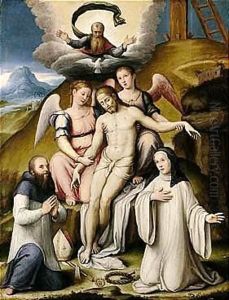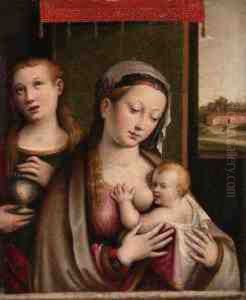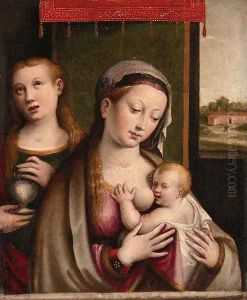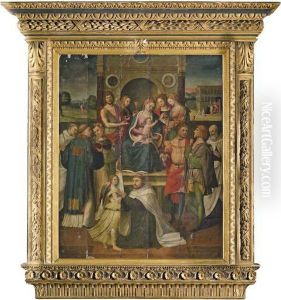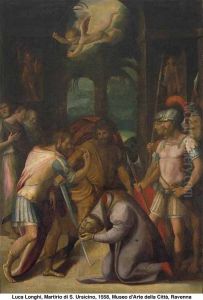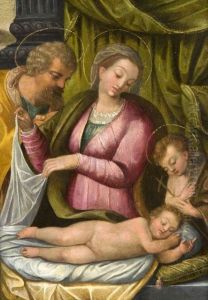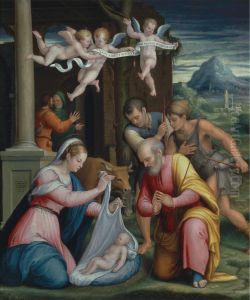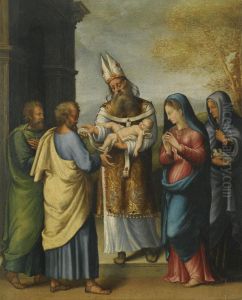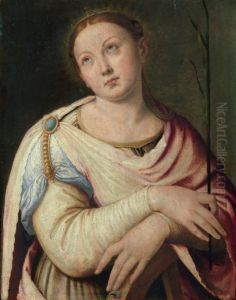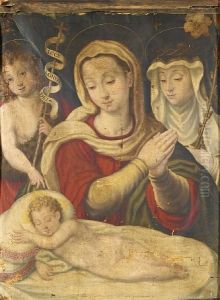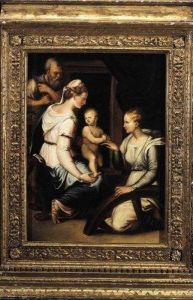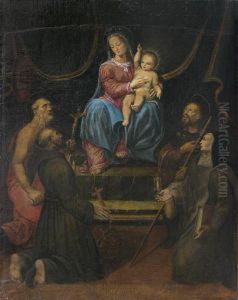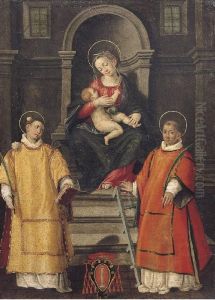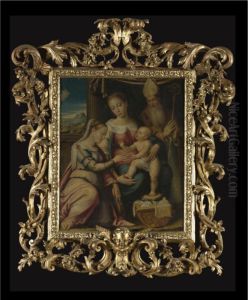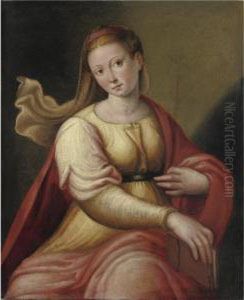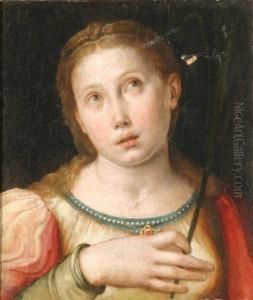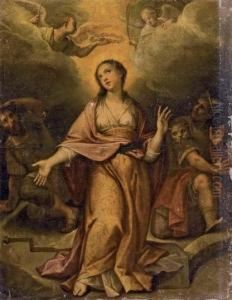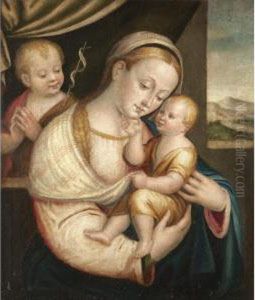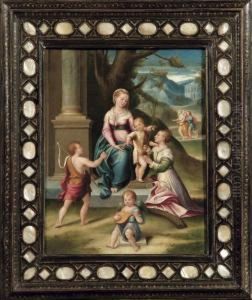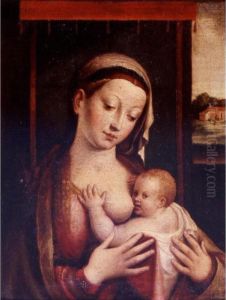Luca Longhi Paintings
Luca Longhi was an Italian painter of the Renaissance period, born in 1507 in Ravenna, which was then part of the Papal States. He is considered one of the main representatives of the Ravenna school of painting, which was characterized by its adherence to the style and techniques of the early Renaissance, even as other regions in Italy were transitioning to Mannerism.
While not much is known about Longhi's early life and training, it is believed that he was influenced by the works of other artists such as Francesco Francia and Raphael, whose styles were prominent during that period. Longhi's paintings were known for their delicate colors, careful attention to detail, and serene religious subjects. He worked primarily on religious commissions for local churches and his style remained relatively consistent throughout his career, focused on traditional religious scenes.
Luca Longhi's most notable work is the 'Madonna and Child Enthroned', which showcases his talent for creating warmth and intimacy in his religious compositions. His other significant works include 'The Annunciation' and 'The Crowning of the Virgin'. Longhi was also a portraitist, and his portraits are valued for their realistic representation and psychological depth.
His contribution to the Ravenna school was significant, and he was a contemporary of other Italian artists who were more famous in their time. Despite his local success, Longhi did not gain the same level of international fame as some of his contemporaries. However, his works were important in maintaining the tradition of early Renaissance art in the region.
Longhi passed away in 1580 in Ravenna. His legacy continued through his children; his son Francesco Longhi and his daughter Barbara Longhi also became painters, continuing the family tradition and contributing to the artistic heritage of the period. Luca Longhi's works can still be seen in churches and museums in Ravenna and other parts of Italy. They stand as a testament to the enduring appeal of Renaissance art and its influence on the religious and cultural life of Italy during that era.
